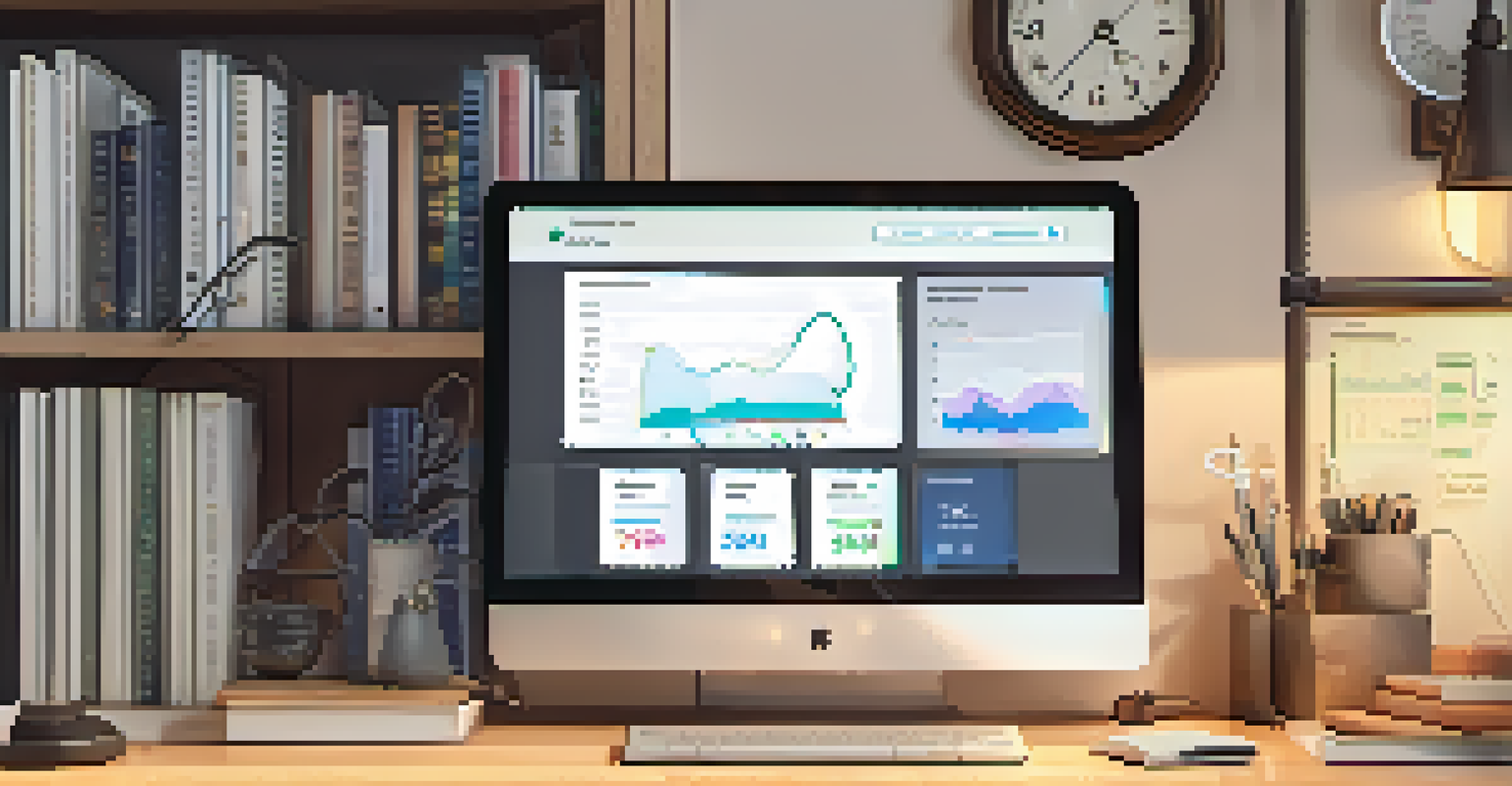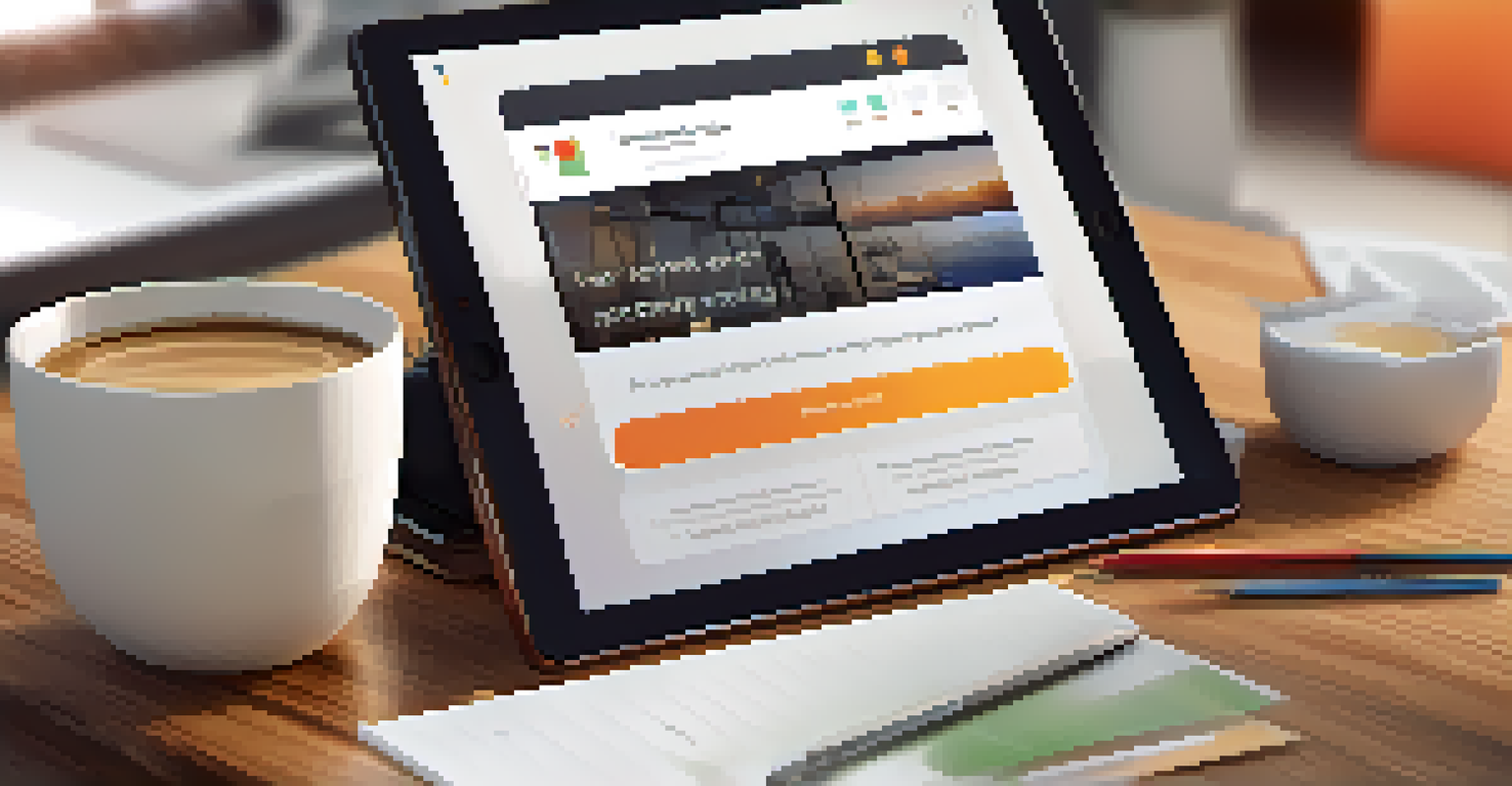Building Effective Email Campaigns for B2B Marketing

Understanding Your Audience is Key to Success
Before launching any email campaign, it’s crucial to know your audience. This means understanding their needs, preferences, and pain points. By segmenting your audience based on these factors, you can tailor your messages to resonate with each group, making your emails feel personalized rather than generic.
The best marketing doesn't feel like marketing.
For instance, if you’re targeting marketing professionals, consider what challenges they face daily. Craft emails that address these issues directly, offering solutions or valuable insights. This not only increases engagement but also builds a relationship based on trust.
Ultimately, the more you understand your audience, the better your campaigns will perform. Use analytics and feedback tools to continually refine your audience profiles and adapt your strategies accordingly.
Crafting Compelling Subject Lines to Boost Open Rates
The subject line is your first impression, and in email marketing, first impressions matter a lot. A compelling subject line can be the difference between an email being opened or ignored. Aim for clarity and intrigue—your subject should give a hint of what’s inside while sparking curiosity.

Consider using personalization techniques, such as including the recipient's name or mentioning their company. For example, 'John, Unlock Exclusive Insights for Your Business' feels more engaging than a generic subject. This personal touch can significantly improve your open rates.
Know Your Audience for Success
Understanding your audience's needs and preferences allows you to tailor your email campaigns for better engagement.
Remember, a/B testing different subject lines can provide valuable insights into what resonates with your audience. Don’t hesitate to experiment and find the perfect balance that drives engagement.
Creating Engaging Content That Delivers Value
Once your email is opened, the next focus is on the content itself. Your message should deliver value right from the start, whether it’s through informative articles, tips, or exclusive offers. Keep in mind that B2B audiences appreciate insights that can enhance their business operations.
Email has an ability many channels don’t: creating valuable, personal touches at scale.
Using bullet points or numbered lists can make your content more digestible, allowing readers to scan through easily. For example, if sharing tips, list them out so that the information is straightforward and actionable. This approach caters to busy professionals who may not have time to read lengthy paragraphs.
Incorporating visuals like infographics or images can also enrich your content, making it more appealing. Just ensure that these elements are relevant and enhance the message you’re trying to convey, rather than distract from it.
Designing Emails for Maximum Readability and Impact
A well-designed email can significantly enhance the overall user experience. Use a clean, professional layout that aligns with your brand’s identity. Consistent branding helps build trust and recognition, making your emails more memorable.
Make sure your emails are mobile-friendly as well; many users check their emails on smartphones. This means using responsive design techniques to ensure your content displays well across different devices. A poorly formatted email can lead to frustration and increased unsubscribe rates.
Craft Engaging Subject Lines
A compelling subject line can significantly improve your email open rates by sparking curiosity and personalizing messages.
Lastly, include clear calls to action (CTAs) within your design. Whether it's a button or a link, make sure it stands out and directs readers toward the next steps you want them to take.
Timing Your Emails for Optimal Engagement
Timing can dramatically impact the effectiveness of your email campaigns. Consider your audience's schedule and habits when choosing when to send emails. For B2B marketing, mid-week days, such as Tuesday through Thursday, often yield the best results.
Experiment with different send times and analyze the performance data. This can help you identify patterns, such as whether your audience prefers morning emails or those sent in the afternoon. Adjusting your timing based on these insights can lead to higher open and click-through rates.
Don’t forget to account for time zones if your audience is spread across different regions. Scheduling your emails to arrive at the right time for each segment can help ensure your message is received when your audience is most likely to engage.
Analyzing Performance to Improve Future Campaigns
After your campaign has been sent, it’s time to dive into the analytics. Metrics like open rates, click-through rates, and conversion rates provide insight into what worked and what didn’t. Understanding these metrics is crucial for refining your strategies for future campaigns.
For example, if you notice low engagement rates, it might indicate that your content or subject lines need improvement. Conversely, high click-through rates on certain topics can guide you in creating more content that resonates with your audience’s interests.
Analyze to Improve Future Campaigns
Regularly analyzing performance metrics helps refine your strategies and adapt to audience needs for continuous improvement.
Regularly reviewing and analyzing your email performance helps establish a cycle of continuous improvement. Utilize these insights to inform future campaigns and adapt to the changing needs of your audience.
Building a Strong Subscriber List for Continued Growth
A strong, engaged subscriber list is the backbone of any successful email campaign. Focus on building your list organically by providing value upfront, such as offering exclusive content or resources in exchange for email sign-ups. This approach fosters a sense of trust and establishes a solid foundation.
Regularly clean your email list by removing inactive subscribers. This not only improves your engagement rates but also enhances your sender reputation. Remember, quality trumps quantity when it comes to subscribers.

Encourage your subscribers to share your emails or forward them to colleagues. This can help expand your reach and attract new subscribers who are already interested in your offerings, creating a cycle of growth and engagement.